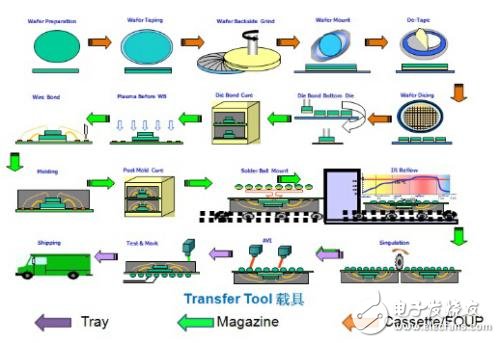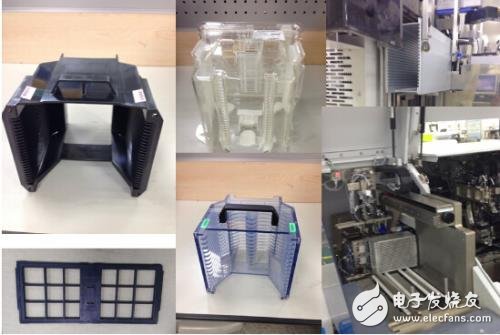In 009, Premier Wen Jiabao first mentioned the Internet of Things (IoT) in the perceived Chinese conversation. After that, the Internet of Things was officially listed as one of the five emerging strategic industries in the country. The Internet of Things began to be between industry and government. The wind is surging, and it is a wave of enthusiasm. Seven years later, in the two sessions held in March 2016, Premier Li Keqiang said in the government work report that during the 13th Five-Year Plan period, the extensive use of the Internet of Things should be promoted and the status of the IoT strategic industry should be established.
In the Hanover Fair of Germany on April 8, 2013, the Industry 4.0 (Industry 4.0) working group presented the final report, and Industry 4.0 immediately set off a wave of government and civil society around the world. There is Industry 4.0, which means there are 1.0, 2.0 and 3.0 before. Simple saying that Industry 1.0 is mechanized, Industry 2.0 is electrification, Industry 3.0 is computerized, Industry 4.0 is intelligent; and to achieve intelligence, data information Itemized and Digital TransformaTIon are important first steps and foundations.
RFID is the most important sensor in the Internet of Things. In a nutshell, the Internet of Things (IoT) converts all attributes into RFID by using RFID and other sensors. After sorting and analyzing, it becomes a valuable application service. The Internet of Things and Industry 4.0 are mutually reinforcing and mutually reinforcing.
In the latter half of the integrated circuit (IC) manufacturing process, generally referred to as package/test, or simply for the test, compared to the first half of the chip manufacturing, although the machines used in each station are also very advanced and highly automated, The degree of process intelligence is relatively backward. In the chip segment, there is a so-called unmanned factory. In the closed section, there is still a long way to go.
In the chip manufacturing segment, the chip is in the form of a wafer. The same size of the chip uses the same carrier. The standard size is generally called the FOUP of the chip box. The majority of the boxes are fixed. 25 tablets. However, in the closed section, there are various packages, and the flow is not the same. This article is explained by the Ball Grid Array (BGA). The integrated circuit will be presented in three different types in the process of the sealed segment, namely the chip, the chip and the finished unit. Therefore, each segment needs different carriers, which are the same FOUP as the previous segment. After using Die Bond, the magazine called the clip, and the Tray disc used in the SingulaTIon process (Fig. 1), which makes the data processing and automation of the seal section process relatively complicated, and the station and station of the test and test station Between now, most of them are still handled by hand trucks, and the Bar Code method is still used as the source of the inventory system model and quantity. Therefore, the data of the sealed measuring section is dataized, and firstly, the electronic label of the vehicle and the problem of reading the electronic label in the storage cabinet should be solved.
Implementation of RFID Acceleration IC Packaging and Testing Industry 4.0

Figure 1: The integrated circuit will be presented in three different forms in the process of sealing the segment. Different carriers are used. The figure is marked in different colors.
In addition, unlike the chip segment, the number of each box is fixed at 25 pieces. The number of each batch in the sealed measuring section cannot be fixed in actual operation. The inventory counting and tracking of each station storage cabinet has become another obstacle to dataization and automation. One of the difficult points.
For the different carriers and different quantities in the process of sealing and measuring sections, Hang Lung Technology has successfully developed electronic tags embedded in different vehicles to design a Near Field Antenna suitable for storage cabinets. We have developed effective adjustment methods and accumulated enough experience to enable RFID stations to achieve the goals of Industry 4.0 such as process data and automation (Figures 2 and 3). The difficulties and solutions that will be encountered are as follows:
1. In the chip placement, backside Grinding, Die Bond and other stations using adhesive tape, misuse of tape is a problem that many seal manufacturers have encountered. UHF RFID solution is used to find that it will stop immediately when misuse. Inspection is the best way to get paid. The adhesive tape part has been obtained by most suppliers. Before the shipment, the specific electronic label is attached to the axis, and the reader (Reader) and necessary software can solve the misuse. The quality of the tape and the subsequent loss of the derivative and compensation.
2. There are several processes in the sealed section that require high temperature baking. The temperature is about 200 °C. The electronic label used should be able to withstand 200 °C. Some customers put the electronic label together with the carrier into the oven. As a proof of the batch being baked.
3. The magazines and storage cabinets in the vehicles used are all metal, which is the most difficult environment for RFID operation. Therefore, the electronic label and reader antenna (item 4) must be specially designed to achieve resistance. Metal effect.
4. Each station's inventory storage cabinets vary in size and shape, and have limited space for RFID readers. Most of them are made of metal, so they can be designed for use in narrow curved metal environments. The field antenna, the so-called Leaky Cable Antenna (LCA or Enhanced Surface Wave Guide), coupled with the Coupling Cable Line (CCL), Small Radia TIon Patch (SRP) and other applications, can overcome the limitations. The near-field antenna has been patented by Taiwan and the United States respectively, and the Chinese part is under review.
5. In addition to the process, in fact, such as Clean Room Access Control, Clean Room Garment Management, Gas Cylinder Management and other non-process management projects, can also use RFID, Achieve safer and more efficient purposes.

Figure 2: Using a variety of different vehicles in the closed-end segment process, how to make different vehicles recognizable is the process intelligence, and RFID is the most effective and cost-effective (Price-performance raTIo) sensor. Sensor).

Figure 3: The inventory storage cabinets of each station in the process of sealing and measuring sections are mostly made of metal materials with different shapes and limited space. Therefore, special-designed near-field antennas must be used together with CCL and SRP applications. limit.

Figure 4: The practical application and benefits of RFID in the IC package test section; Front End refers to the former stations of Wire Bonding, and Back End refers to the stations from Molding to Singulation.
In the IC application, the RFID application can be used to establish the process and inventory (Batch or Lot). Each model (Device) can be identified in different stations to achieve projectization, and further constitute a network connection. With the relevant software system, the foundation of the intelligent factory can be established, and the station-by-site expansion can finally achieve the goal of unmanned factories and paperless, while at the same time improving productivity, ensuring quality, and improving asset security. Significantly enhance the competitiveness of enterprises.
Wall Mount Power Supply,Wall Mount Power Adapter,Universal Power Plug Travel Adapter,Tablet Adapter Travel Charger
Ninghai Yingjiao Electrical Co., Ltd. , https://www.yingjiaoadapters.com